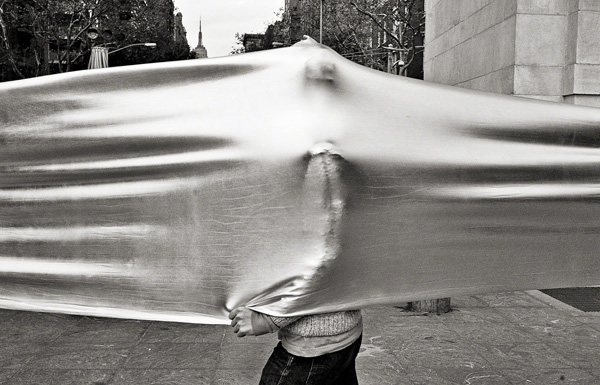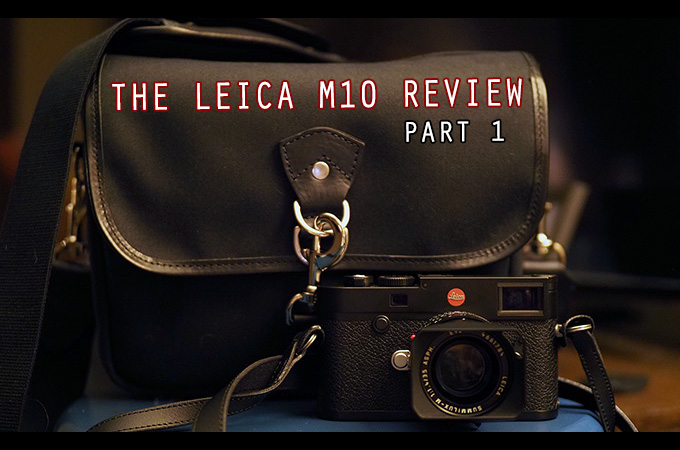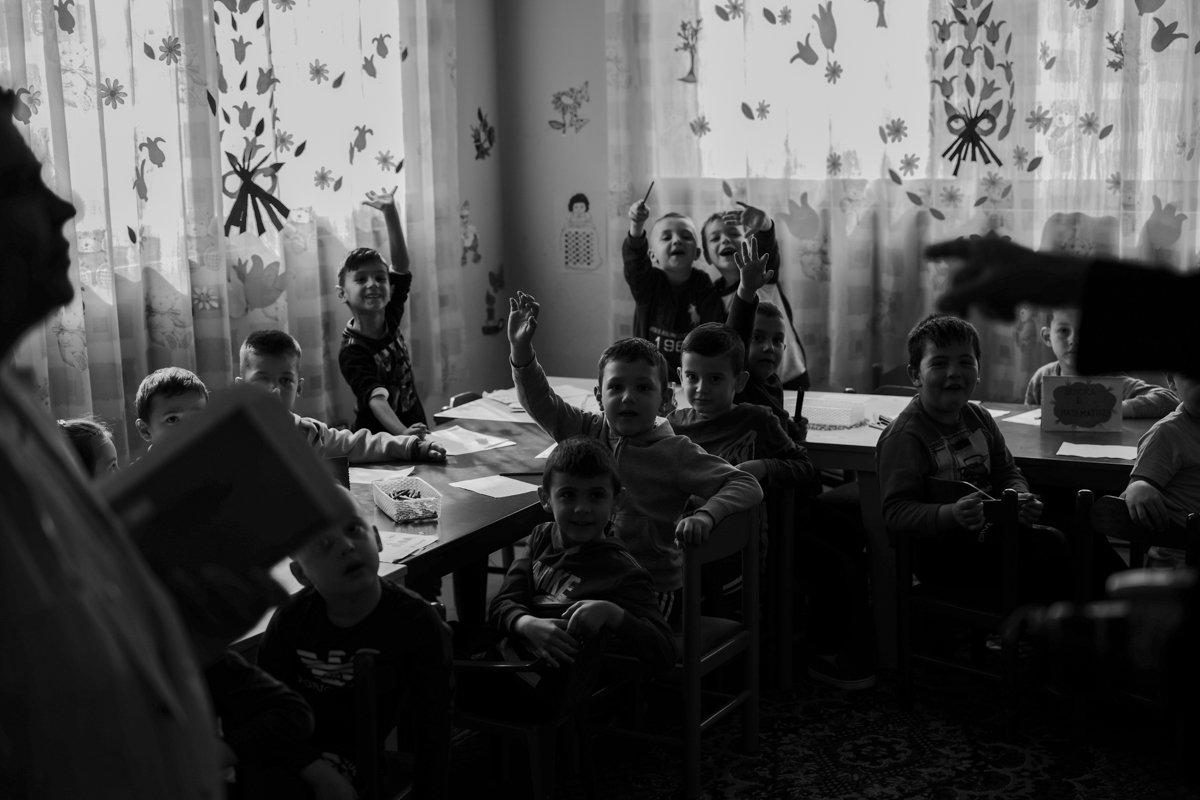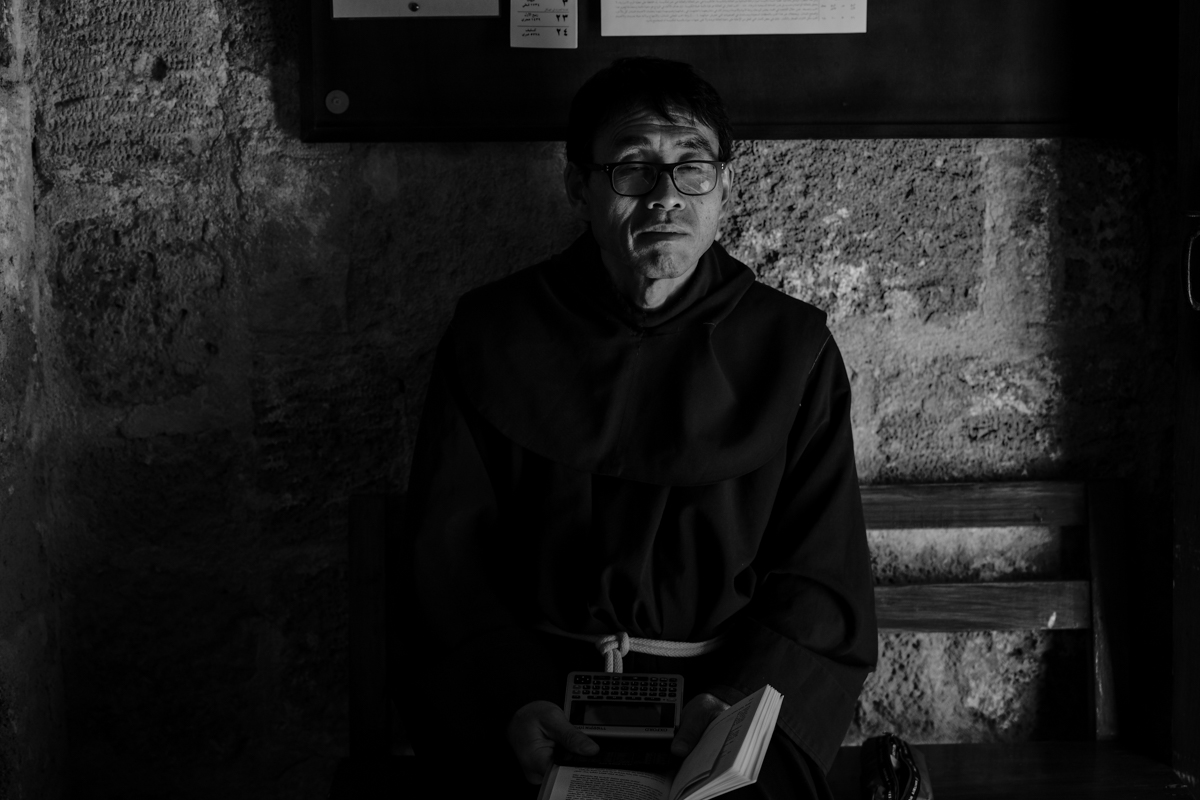Take or Make
by David Lykes Keenan
Are you a taker or a maker?
I had the pleasure of meeting photographer Robert Herman recently in my new home of NYC. We were meeting to compare notes about self-published vs. artist-funded photography books. These are probably the best two (the only two?) ways for artists not-already-famous to publish books of their work these days.
Robert, by the way, has self-published his book The New Yorkers to much success and acclaim. It’s been a ton of work for him but he’s now into a second printing which is almost unheard of for a self-published photography book.
During our talk, Robert suggested I find a book that has long been out-of-print. “You can probably find it on Amazon,” he said. He was right. My copy was either legally or illegally lifted from the University of South Carolina Museum of Art library and sold to me for $1. Only the library pull card was missing. The book is Mirrors and Windows: American Photography Since 1960 with an introductory essay by John Szarkowski, an untouchable if there ever was one, in the world of photography.
I usually just look at the pictures in a photo book, I call this the National Geographic Effect, but in this case, I read every word. My first impression was how timely to 2014 it felt even though it was written in 1978.
The first part of the Szarkowski essay focused on the impact that Robert Frank (and The Americans) and Minor White (and Aperture magazine) had on American photography after the 1950s.
The point of the essay (and the theme of the book) was to demonstrate how photography could be divided into two camps that Szarkowski referred to as “straight” (Frank) and “synthetic” (White). He was very careful not to draw to firm of a dividing line, leaving that open to artistic interpretation, but went onto discuss the new generation of photographers who emerged in the 1960s and how they were influenced by Frank and/or White to find themselves representatives of either straight or synthetic photography.
The photographs in the book are divided into two sections with many examples of each form. The names associated with this collection of photographs, we now recognize as a Who’s Who of iconic photographers. Erwitt, Winogrand, Friedlander, and Meyerowitz on the straight side; Capanigro, Uelsmann, Warhol, and Hass on the synthetic side. Among many others.
By the time I was nearing the end of the essay, the title of the book had completely slipped from my mind. In the closing paragraph, Szarkowski tapped his seemingly endless knowledge of the history of photography when he looked even further back than the 1950s and suggested that the father of straight school to have been Eugene Atget, and the synthetic to have been Alfred Stieglitz.
Then everything about the book, about mirrors and windows, came completely into focus (pun intended) with the final sentence of the essay. “The distance between them (Atget and Stieglitz) is to be measured not in terms of the relative force or originality of their work, but in terms of their conceptions of what a photograph is: is it a mirror, reflecting a portrait of the artist who made it, or a window, through which one might better know the world?”
As I wrote earlier, change some of the names, add about 30 years to the dates, and Szarkowski could have been writing about photography of the 21st century, the essay would have a very contemporary feel. These two camps of photography haven’t gone anywhere.
I certainly have experienced this is my own photography and I strongly identify with my camp. I think this is why I found the Mirrors and Windows essay compelling enough to not give it the NatGeo treatment. I just never thought about it using the terminology adopted by Szarkowski, that is “straight” and “synthetic”, which does have a rather dated feeling in 2014.
I’ve always thought of this photographic divide to be between photographers who “take” pictures and those who “make” pictures.
As a street photographer, I definitely take pictures. Landscape photographers take pictures. A fashion photographer or a commercial photographer make pictures.
Of course, as Szarkowski was careful to point out, overlap is allowed. That, pardon my editorializing, ridiculous $7 million photograph of the Rhine River by Andreas Gursky was a made landscape.
Try as I might, any personal attempt at crossing over in the make camp has, well, not been pretty. My mind and/or photographic eye just doesn’t work that way. It’s not a good thing or a bad thing, I remind myself, it just is.
So, do you take photographs or do you make photographs? Are your photographs windows or mirrors?
—
David has been photographing seriously since 2006 when he left his software company in capable hands and has not set down his camera since. Presently he is managing a Kickstarter campaign to publish his book of street photography entitled FAIR WITNESS. You are encouraged to check the campaign and make an investment to assist in bringing FAIR WITNESS to the bookshelves.
From Steve: Please DO check out David’s Kickstarter and if you like what you see feel free to help get him to his goal. These things are tough and I applaud and respect those who go out there and make efforts to get it done. You can see his video below, great and passionate guy:


![173393 Frame 096 [Colin 1]](http://www.stevehuffphoto.com/wp-content/uploads/2014/06/173393-Frame-096-Colin-1-680x466.jpg)




@Brandon: “Previs is to Ansel as moment is to Bresson”. I don’t think so. Capturing the moment can only be done to full effect if the photographer is able to see the dynamics in an evolving situation and previsualise what the next step might be. Don’t ever think Bresson just snapped away, and that previsualising is only required for stationary subjects.
Interesting discussion. I recognise the two approaches but would rather see them in terms of a Gestalt rather than an either/or scenario. A Gestalt where both figure and ground are interchangeable.
And even then Antonio, the world as we see and attempt to reproduce it is infinitely more complex than what that German word achieves… 😉
I have no issues with those who make photos. I’m just too lazy to do it myself.
I found one of John Szarkowski’s books, “Photography Until Now.” It’s on hold. I will order the recommended book from Amazon.
Thanks for reminding me to use my local library.
Since art college in the 1970’s I have made photographs. The term ‘made’ sidesteps the illusion that there is anything innocent or unmade about a photograph.
The photographer points the camera, so he edits the world around him, that is making, not recording dispassionately, not allowing the viewer of the photograph to have an opinion devoid of interference. In fact all the photographers of the great American landscape tradition ‘made’ photographs, and even the photographers such as Frank, Winogrand, etc. recognised they had an influence in the image, so they also made the photograph.
To be honest I think you are chasing an illusion that a photograph is anything other than a mirror of the photographers intent. Consider that even Don McCullin gave darkroom notes for dodging and burning to his printer to best express what he intended in the photograph. There is of course a deeper discussion around where photography becomes blatant lying or overt manipulation, but just trying to hijack the well understood term of ‘making’ an image isn’t it.
Szarkowski wasn’t a shallow thinker, and was deeply aware that all photographs are “made”; in fact, the relationship between photograph and photographer was something he explored in a lot of different ways. (For example, he once curated a show called “One-Eyed Dicks,” of images made by security and surveillance cameras — photographs without a photographer.) I agree that the distinction between “made” and “taken” has largely turned into a word game, what with fine-art photographers “making” elaborate fictional scenarios and then “taking” photographs of them in a naive, direct way. But it’ still useful to think about, at least for the purpose of comparing what WE think we’re doing when we photograph vs. what other viewers may think we were doing. Do you want viewers to PERCEIVE your photos as “made”, or “taken”? People do tend to sort themselves into one camp or the other, regardless of how they actually make their photos happen…
OK, what are the PERCEPTIONS if you give ordinary people, not photographers, the words you like to use for a ‘taken’ photograph, ‘Taken’, and ‘shooting’ or ‘shot’, or ‘grabbed’. How do they interpret these words? Are they positive words?
‘Taking’ photographs is an aggressive action, so is ‘shooting’. They are the words of somebody out of control, with no compass, a typical snapshooter, no plan, they just photograph where they are and what they like. They take styles as they come and go, they are out for quantity, they are out to ‘grab’ the latest camera, they are so busy shooting they can’t spell Summicron but can only say ‘Cron. These people are the ‘takers’ because nothing deeper matters. And fine, nothing deeper need matter unless threads pop up on the internet saying that ‘takers’ are the truth about photography.
Interesting line of thought Steve. What do you think of Gregory Halpern’s photography? Does he record, does he interpret, add meaning, take away meaning, change meaning? The answer is not important, but the discussion is.
I am not fully up to speed with Halpern’s photographs, not having studied them in context, but the same thing holds true, if you have a plan you make a photograph, if you don’t have a plan you take them. It is all about intent either at the recording stage (the press of the button), or at the editing stage, the exhibition or book. Even if photographs are unthought about and random at the recording stage (like a stream of consciousness) they become ‘made’ when sequenced and presented. And because the photographer knows in advance they may eventually be sequenced and presented the level of randomness is marginalised, they are ‘made’ to be discovered later.
Yes. Intent. Pre-visualizing. So important. And yet, “snapshots” turn out to be art. Amazing, fascinating,
You said it much better than I can Steve.
Previs is to ansel as moment is to Bresson
Steve, totally agree. David, I think you might have misunderstood Szarkowski’s terminology and maybe you’re projecting your opinions a little. “Straight” isn’t the same as taking a photo, and “synthetic” isn’t the same as making a photo. As Steve pointed out, “making” simply means the photographer used their skills and intentions to create a photo, rather than just randomly “taking” a photo. The subject doesn’t matter, it can be setup (like a studio scene) or on the street.
Straight just means non manipulated and synthetic means obviously manipulated.
If you have ever framed a photograph and decided what is in the picture or what is out of the picture you have manipulated what people see in the print. The idea of ‘straight’ photographs comes from an old blanket idea that ‘photography cannot lie’. Today we know that photography may not exactly lie, but it if you point your camera at a the freedom fighters you are ignoring the point of view of the loyalists.
I always wonder what was going on behind the camera that took that attention grabbing shot. Not always a pretty sight I think.
True but the method of shooting is still straight.
And I imagine getting images from both loyalists and freedom fighters would be an interesting task to complete.
I don’t mean this disrespectfully, by he left his software company and now he needs Kickstarter? Seriously?
+1
That’s rich people for ya.
I wasn’t sure how to respond to this essay. So, I’ll simply say I enjoy my photography, whichever camp it falls in.
Fortunately, I’ve never felt the need to “strongly identify” with a camp, photography wise or otherwise.
Exactly, Michiel. Just enjoy it. Go out and shoot, grab, take, make, capture, or snap away to one’s heart’s content. Philosophising about what I’ve just done isn’t for me, it’s likely to hurt my brain.
Hi Terry! I, on the other hand, do philosophize a lot, and the damage that has done to my brain is with me every day. I try not to burden others with that, but someday I may on this blog. Beware!